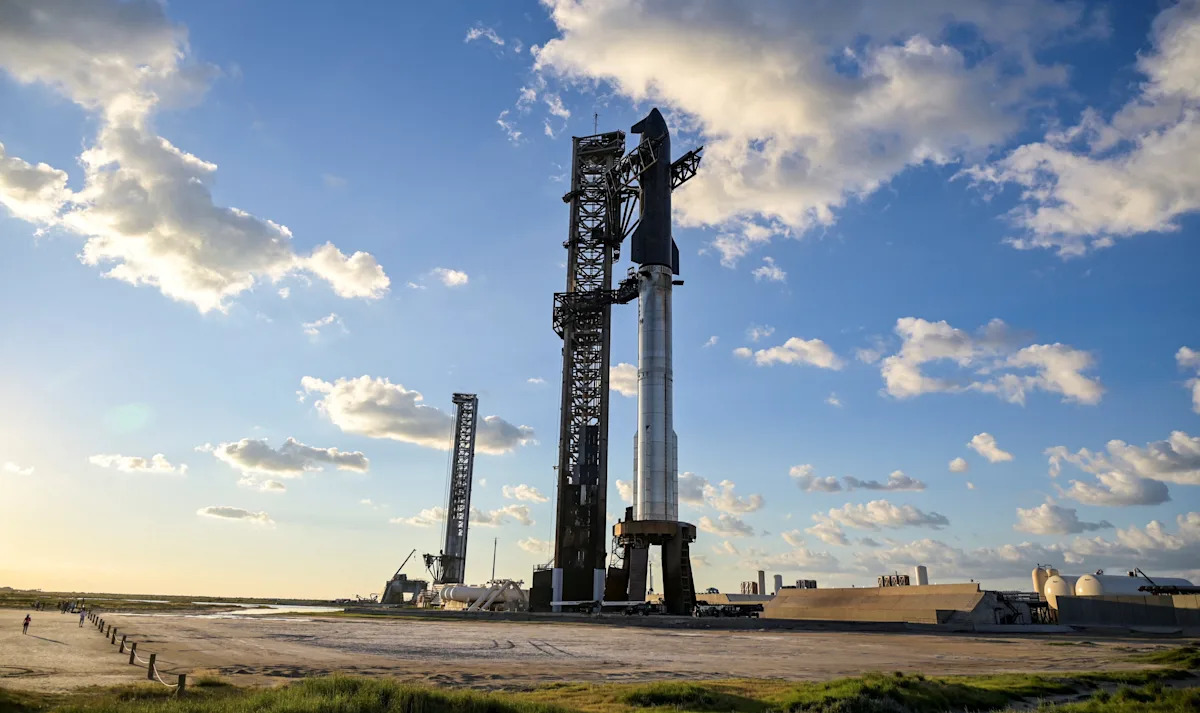SpaceX has for more than two years been testing its massive Starship rocket from Texas for several future missions, including NASA’s highly anticipated human moon landing.
NASA had previously awarded a lucrative contract to SpaceX to develop a vehicle to ferry Artemis III astronauts to the lunar surface before the decade is out. But SpaceX’s role in that mission is now in jeopardy with the U.S. space agency’s decision to reopen the contract.
That means NASA is looking for new ideas for moon landers from SpaceX rivals like Blue Origin and Lockheed Martin to help its astronauts return to the surface of the moon for the first time in more than half a century. The move, which NASA Acting Administrator Sean Duffy has publicized in several recent network news appearances, comes as progress for SpaceX’s Starship megarocket has been slower than hoped.
Here’s everything to know about NASA’s moon landing plans, and what the latest decision means for the commercial rocket company founded by billionaire Elon Musk.
What is NASA’s Artemis lunar program?
Under its Artemis campaign, NASA is looking to return Americans to the surface of the moon for the first time in more than 50 years since the end of the Apollo era in 1972.
NASA, which already sent an uncrewed Orion capsule on a moon-orbiting mission in 2022, is next planning to send four astronauts on its Artemis II mission in 2026 on a 10-day mission circling the moon. The moon landing itself would be attempted no earlier than 2027 during an Artemis III mission.
Why is NASA interested in the moon?
NASA astronauts would help establish a permanent lunar settlement that would empower future human missions from the moon to Mars.
The moon’s south pole, which is largely unexplored except for a few uncrewed robotic missions, is believed to be home to subsurface water ice that could be a valuable resource for astronauts living and working at a lunar base. If water could be extracted, humans could use it for drinking, breathing and as a source of hydrogen and oxygen for rocket fuel.
What is SpaceX’s Starship? Its role in lunar landing
Starship, the approximately 400-foot megarocket that SpaceX is testing for future spaceflight, is due to play a vital role during the Artemis III lunar landing.
Composed of a lower stage Super Heavy rocket booster and the upper stage Starship vehicle, the spacecraft is regarded as the world’s largest rocket when fully stacked.
SpaceX, which is developing Starship to be fully reusable, recently completed flight tests for its second version of the rocket. The company has indicated that demonstrations for its third version of Starship, or V3, could begin either before the end of 2025 or early in 2026.
NASA has contracted Musk and SpaceX to develop a configuration of Starship that would be capable of ferrying astronauts from orbit to the moon’s surface.
Starship development lags
But Starship’s progress has not come quite as fast as NASA has hoped.
The spacecraft has launched a total of 11 times since April 2023 from SpaceX’s Starbase headquarters and company town in South Texas near the U.S.-Mexico border. Early on, each test had generally improved upon previous demonstrations until SpaceX hit some setbacks at the beginning of 2025 with a series of three failed tests ending in explosions.
SpaceX got things back on track with its most recent two missions that reached new objectives.
But the vehicle has yet to reach orbit in any of its tests and still has not attempted to refuel midflight, which is necessary to reach distant destinations. SpaceX would also need to land an uncrewed Starship on the moon in order to be meet NASA’s standards for a human mission.
NASA reopens SpaceX contract
NASA has opted to reopen its moon landing contract, now worth $4.4 billion, to other bidders, Reuters reported.
Duffy has recently suggested in a series of network news interviews that President Donald Trump wants to see the lunar landing take place before his White House term ends in January 2029.
Duffy later added on social media site X that, “We are in a race against China so we need the best companies to operate at a speed that gets us to the Moon FIRST.”
Musk, the CEO of SpaceX, didn’t appear concerned about the prospect of competition in a post on social media.
“SpaceX is moving like lightning compared to the rest of the space industry,” Musk wrote on social media site X in a reply to a user. “Moreover, Starship will end up doing the whole Moon mission. Mark my words.”
Jeff Bezos’ Blue Origin, others, could compete for moon landing
Blue Origin, the space technology company owned by billionaire Amazon founder Jeff Bezos, is among the companies expected to compete for the mission.
Blue Origin also already has a roughly $3 billion Blue Moon lander in development as part of a similar lunar landing contract awarded by NASA in 2023 for later Artemis moon landing missions.
“Blue Origin is ready to support,” a Blue Origin spokesperson said in a statement to the USA TODAY Network.
Lockheed Martin also confirmed to the USA TODAY Network that it would explore human lunar lander designs for NASA.
Elon Musk wants to send Starship to Mars, deploy Starlink satellites
Starship is the centerpiece of Musk’s vision of sending the first humans to Mars, with plans for the first uncrewed Starship to head straight from Earth to the Red Planet as early as 2026. Human missions, Musk has claimed, could then begin in the 2030s.
Musk also plans for Starship to one day send larger batches of Starlink internet satellites into space, complementing its Falcon 9 workhorse.
Contributing: Reuters
This article originally appeared on Corpus Christi Caller Times: After 11 Texas tests, Starship’s role in moon landing now in question
